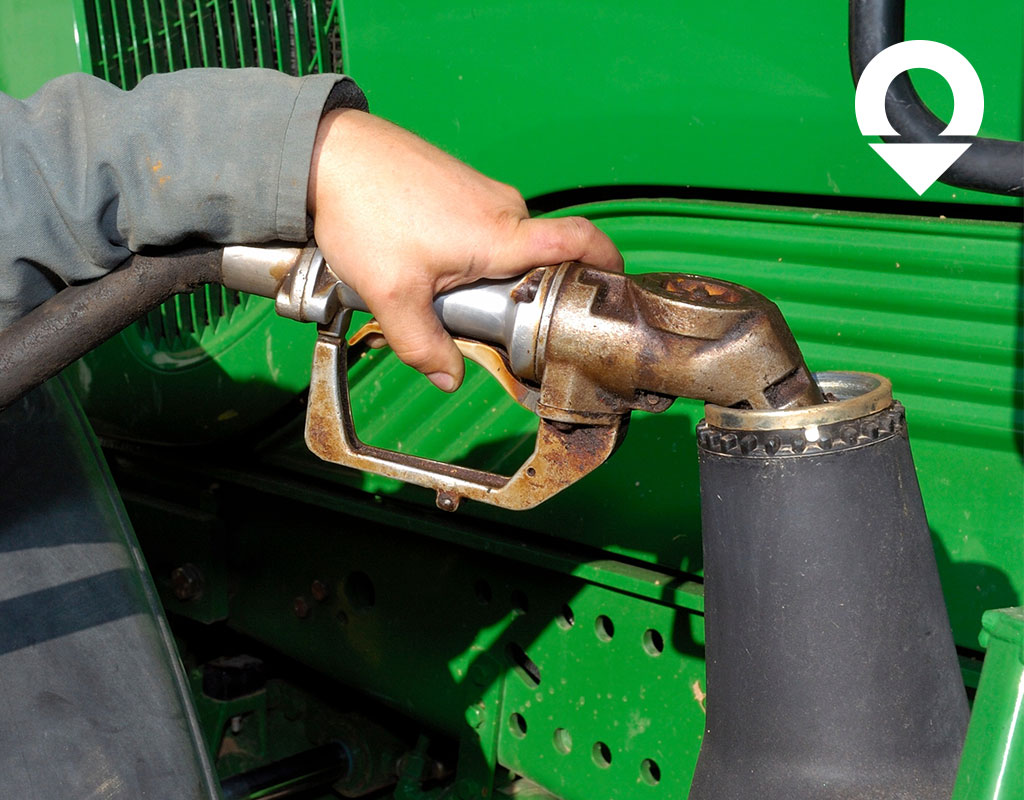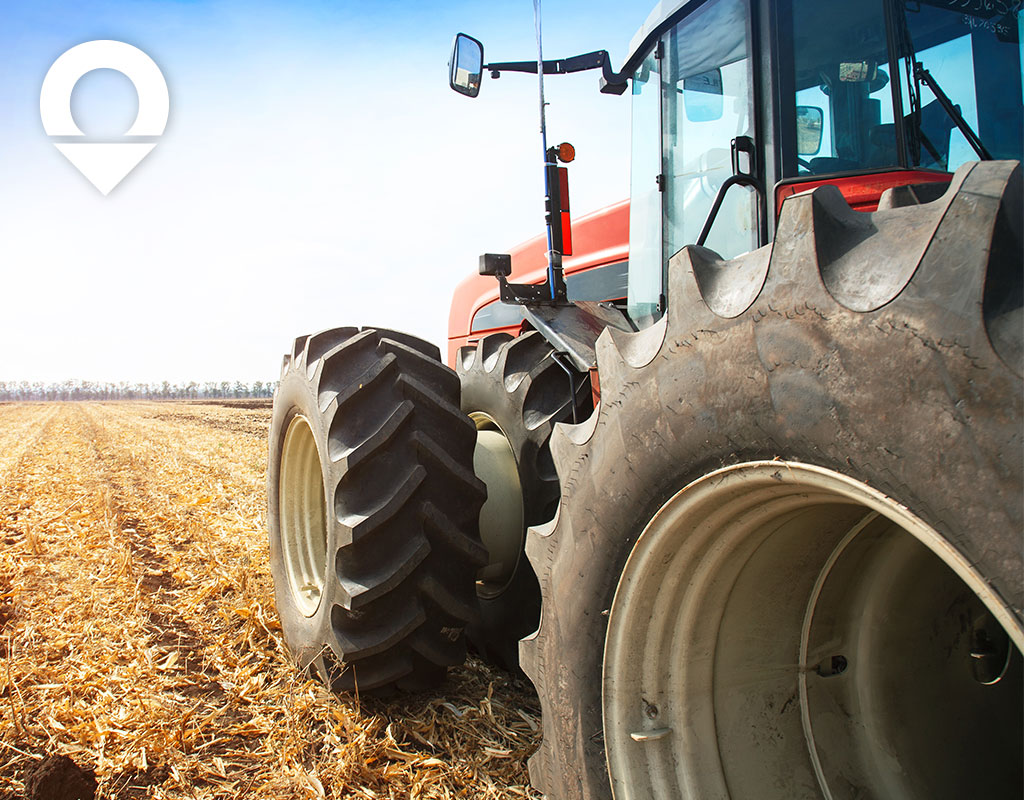Tractors fulfill many functions on different agricultural operations and are part of the machines that are essential to productivity for farmers today. However, they are also energy-intensive machines and the consumption of agricultural tractors is today becoming one of the expenditure items to be monitored as closely as possible for farmers. With the increase in the price of fuels, and in particular that of GNR (non-road diesel) in recent years, the fuel budget of an operation is increasing and this is without taking into account the general increases in other consumption items necessary for proper functioning of an operation such as raw materials.
Although there are alternative fuels today, more modern machines that consume less, and other solutions, it still remains essential to know how to accurately calculate the fuel consumption of tractors in order to analyze and implement actions to achieve fuel savings.

What is the consumption of an agricultural tractor?
As we said in the introduction, fuel is by far the most exploited energy in French agriculture. The unit of measurement for the consumption of an agricultural tractor is expressed in g/KWh or in liters. The unit of measurement in g/KWh has the advantage of allowing the energy performance of various tractors or rather their engines to be compared independently of the speed, terrain or load transported. Consumption expressed in liters would indeed be an inconsistent measurement at first glance, although the conversion can always be carried out. For example, we can generally say that an 80 HP tractor will consume 35 to 40 liters per 100 km but that doesn't make much sense compared to g/kWh.
Indeed, the g/kWh takes into account the quantity of fuel consumed by the engine to produce one unit of energy (1 kWh). An engine with low consumption in g/kWh will therefore be considered more fuel efficient and more efficient.
Now let's take some examples based on engine power. This remains of course averages which can vary greatly depending on the conditions of use and the general state of maintenance of the vehicle.
Consumption of a 150 hp tractor
For a 150 horsepower tractor , fuel consumption will be between 217 and 272 g/KWh for the most economical ones.
To convert this result into liters, you must know the duration of use of the machine and also the percentage of power used. Let's assume that the tractor runs for two hours and at 80% of its capacity we would therefore have a consumption of around 50 liters .
Consumption of a 200 hp agricultural tractor
For a 200 horsepower agricultural tractor , consumption is between 214 and 263 g/KWh for those with good output.
If the mechanical power of the tractor is equal to or exceeds 2 HP/ha, mechanization costs and energy consumption reach peaks. In order to calculate the cost consumed by an agricultural machine, simply take 0.1 L/hp h as a reference value.
Take the example of a 155 HP tractor, it will consume approximately 15.5 L/hour. If the price of diesel is €0.65/L, the cost of fuel for the tractor will cost €10/hour.

Which tractor consumes the least?
You should know that, when switching to the bench, the more the maximum power measured at the PTO (OECD) increases, the lower the consumption of a specific agricultural tractor and the more the engine improves its energy efficiency. Tests were carried out in order to make the different classifications below. We have listed the tractors that consume the least on the market for a power of 100 to 120 horsepower:
- The Lindner Geotrac 104 ep: The lowest consumption amounts to 219 g/KWh at 1,300 rpm. It has a usage efficiency of 39%. It is more economical than the Lintrac 90 and the New Holland T5.110 Electro Command.
- Tied for second place are the Claas Atos 350, the Massey Ferguson 5711, the Deutz-Fahr 5115 and the John Deere 5100R: they all absorb 245 g/KWh.
- For equal efficiency, in third position, the Kioti PX 1153, the Kubota M5111 and the Valtra A104: they consume 250 g/KWh.
For tractors with a power of 120 to 150 horsepower:
- The New Holland T6.165 Dynamic Command: consumes on average 217 g/KWh and an efficiency equal to a rate of 40% at a speed of 1,600 rpm. It has a 4.5 liter FPT engine.
- The Frendt 313 Vario and the Case IH Luxxum 120 are both second: 223 g/kWh consumption. The Box IH has a 3.4-liter four-cylinder FPT engine.
- The Landini 6-145 Roboshift: it consumes 272 g/KWh and has a usage efficiency of 32%.
Finally, concerning those with a power of 150 to 200 horsepower:
- The Case IH Puma 150 CVX and the Fendt 718 Vario: it consumes 214 g/KWh at 1,500 and 1,300 rpm. Their yield is 41%. The Case IH is equipped with a 6.7 liter FPT engine.
- The New Holland T6.180 Dynamic Command: it consumes on average 219 g/kWh.
- The Massey Ferguson 7716 dyna-VT: it absorbs 220 g/kWh.
All categories combined and ranging from tractors with 100 to more than 300 horsepower, the one that is the most economical and the most powerful is the Fendt 1046 Vario with a consumption of 204 g/KWh for a maximum power of 460 horsepower. Its utilization efficiency is equivalent to 43%.
The rise in agricultural fuel prices
What fuel for agricultural tractor?
Farmers use GNR or non-road diesel in their work every day.
The difference with diesel is that it has a reddish color that helps identify it, while diesel as we know it is transparent.
The increase in the price of RNG
The rise in non-road diesel prices has a direct impact on farmers and they are having difficulty getting by financially. Indeed, for several years and in particular since 2021 the price of GNR per liter has been €0.70. The following year, in 2022, it increased to €0.90 and then went up to €1.60 per liter. Today, in 2023, its price is approximately €1,278.
Hence the growing importance of implementing actions and using existing good practices and technologies to reduce the fuel consumption of agricultural tractors .

How to reduce the consumption of your tractor?
ADEME good practices
In order to reduce the consumption of your tractor and especially the costs incurred in relation to fuel, we will guide you by giving you several tips:
- Choose the “economic PTO” option when purchasing: or “40 km/h” or “booster”.
- Do not take a tractor that is too powerful: the objective is not to over-mechanize. You must adapt the machine to your needs and your activity so as not to end up with a tractor that is more powerful than necessary.
- The choice of tires: the more resistant and adapted to our use we choose, the better their lifespan will be. As a result, the purchase of tires becomes less recurring. You must also take care to check the pressure of these carefully. In fact, if the tire pressure is not optimal then consumption can be increased by up to 15%.
- Check the tractor with technical test bench tests and adjust the engine: when servicing the tractor mechanization, checking these two parameters results in a saving of 1.5 liters of fuel and translates on average into a saving of 400 to 500 €.
- Carry out economical driving training: eco-driving practices .
The ECOLOW module for agricultural machinery
The solutions cited above, although effective, are insufficient to ensure maximum savings. The issue of agricultural tractor consumption is not only financial but also ecological. It is becoming essential to act in this direction and this is why ECOLOW has developed, after many years of research and testing, a fuel saving module adapted to the agricultural sector.
Since 2018, we have been helping companies like yours reduce their diesel costs and their environmental impact with our patented and approved system in Europe. It optimizes the combustion of RNG, reducing consumption by 12 to 15% . Our non-intrusive boxes adapt to agricultural and forestry machines without affecting the warranty and comply with European standards.

